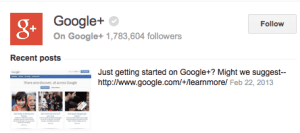 I got bought, and I bet you’ve been bought at some point or another, too…right there in the online product reviews of Amazon.com. I don’t feel good about it, I actually am upset that I caved.
I got bought, and I bet you’ve been bought at some point or another, too…right there in the online product reviews of Amazon.com. I don’t feel good about it, I actually am upset that I caved.
Let me share:
1. Kidlet wanted a new iPod case; none of them were available or appealing at Best Buy.
2. In a search on Amazon for “iPod cases” this Harry Potter SkinIt brand “case” appeared.
3. We bought as it was the most reasonable price; it arrived and to my chagrin and lament, it was a sticker.
4. Then I felt dumb; ah-hah, the “SkinIt” brand was all about skins as stickers and not skins as gel cases or what not. How was I to know? A mom trying to appease a pre-teen with what she wants with nary a look at the fine print.
5. We went to Target and found a white case; kidlet trimmed the SkinIt to fit and now she’s happy. But, Mom wasn’t.
Write A Product Review
When the request came to write a product review (it caught me at the right moment as I had ignored the request many times previously), it was the right moment. I gave it 2.5 stars and said that maybe I was a dumb mom for not knowing SkinIt meant sticker.
Wait several days and here comes the product team for SkinIt. “We have refunded the prices of your purchase, will you please now alter your product review to something more positive? After all, the fine print says explicitly that this is not a case at all, blah, blah. Here are the steps you take to change your review to a positive one.”
A Range of Emotions
From the “I got bought” trashy feeling to the “really? Are you kidding me?” and the “I’m so pissed off” emotions, I ranted and raved internally and was none too happy with this chain of events.
Options were to:
1. Oblige them with a new glowing review.
2. Do nothing.
3. Delete the comment totally.
4. Rant and rave in the comments section for all the world to see.
5. Write a blog post on the experience.
Before I share my decision, let me share one of my peer’s blog posts with you; it was so timely it was uncanny.
Mark Schaefer’s Dongle Blog Post
Mark Schaefer, blogger at {grow}, shares a scary post about the world in which we now live policed by onlookers and bystanders (no longer innocent) looking for an instant of fame (in this case negative) to influence the what-used-to-be-jokester mentality of peeps having fun in and amongst themselves.
In a gist, two guys yak together about the “big dongle;” the girl in front of them snaps a photo of them, posts it to Twitter with an “I’m offended” comment and what ensues is where nightmares are written. I want you to read Mark’s post to get all the gory details, and how this is relevant to me is the following:
1. Your fellow man is no longer trustworthy.
2. The online world is scarey and full of those wanting to take advantage.
3. Employers are caving to the online pressure of negativity by a few who have taken advantage.
4. Innocent people (who joked amongst themselves) are losing jobs as a result and fighting back via cyber attack.
5. And, me? I wrote a negative online product review because it was true and was bombarded with the appeal of a refund and strong request to alter the truth.
What did I do? Number 3 and number 5.
You might like Mark Schaefer’s latest book, Born To Blog:


 Whoever thought that social media is the sole solution for a failing SEO campaign is bound to face more disappointments. Although
Whoever thought that social media is the sole solution for a failing SEO campaign is bound to face more disappointments. Although  The Graph Search is yet to be launched though, and while that may be an improvement for an SEO-minded Facebook user, the totality of its benefits are yet to be seen.
The Graph Search is yet to be launched though, and while that may be an improvement for an SEO-minded Facebook user, the totality of its benefits are yet to be seen.


















 There has been so much bogus “
There has been so much bogus “








